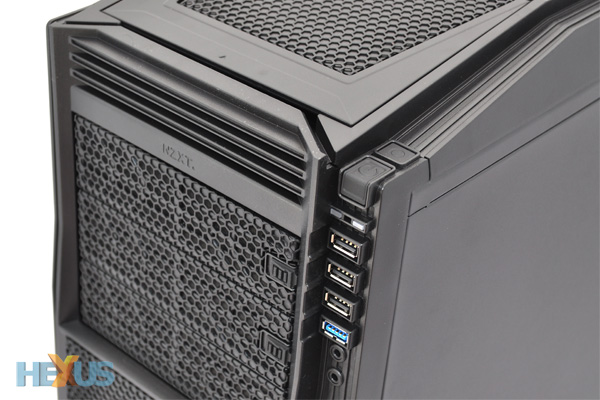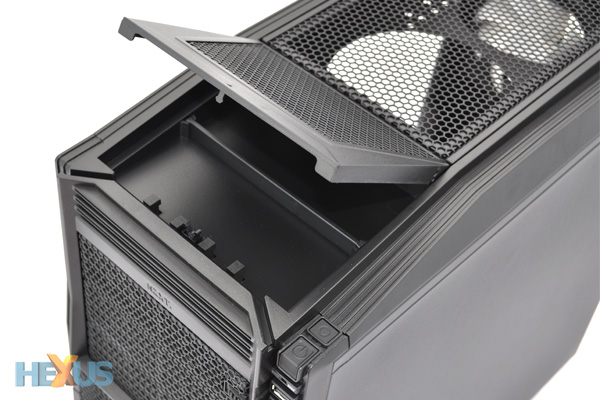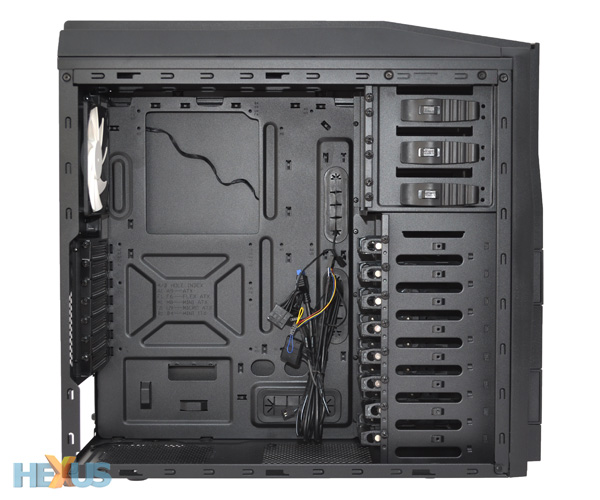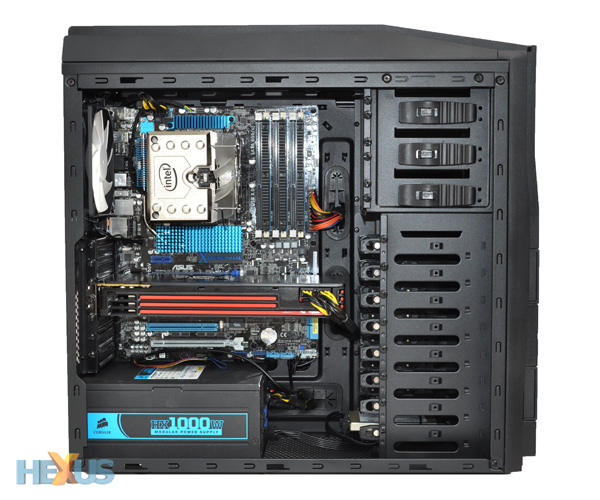A closer examination

Alongside a plentiful supply of mesh panels, the Tempest 410 Elite's front edge neatly houses an I/O panel consisting of power and rest buttons, white power and hard-disk activity LEDs, three USB 2.0 ports, a single USB 3.0 port and audio and microphone jacks.
The sleek implementation of these buttons and ports is nice to see, and there's a useful hidden compartment in which to store regularly-used peripherals.

The compartment's push-to-release panel feels a little crude, but it's a handy feature to have and there's plenty of room inside for an external 2.5in drive and a couple of USB memory sticks (the plastic divider you see in the above image is removable to create more space).
Speaking of space, the chassis' internal cavity doesn't feel quite as roomy as the 215mm x 481mm x 496mm frame suggests it should. And there are a couple of obvious reasons why; the top of the chassis is reserved for a dual radiator; and the eight hard-disk bays employ a front-to-back installation mechanism.

All eight storage bays are easily accessible by removing the front fans - and all eight support your choice of 3.5in or 2.5in storage devices - but this particular orientation does cramp the main motherboard area, in particular the PCI slots. NZXT states that the chassis supports graphics cards measuring up to 315mm in length, but while that's true, installing a hard disk in one of the bays near the graphics card will reduce the maximum length to around 250mm.
We'd much prefer to see NZXT adopt side-mounting storage bays, and the USB ports need a re-think, too. While the single USB 3.0 port connects directly to a on-board header, there's no adaptor supplied for users without a supporting motherboard. And there are three USB 2.0 ports, split across two motherboard headers - it's a wasteful configuration and 2x USB 2.0 plus 2x USB 3.0 would make better sense.
But other than that, there's not a lot to dislike. The all-black interior is nicely finished, there's a large cutout in the motherboard tray for CPU cooler installation, and once you get used to the tighter-than-expected confines, the chassis is quite enjoyable to build into.

Our high-end X58 test platform - consisting of an ASUS ATX motherboard, an Intel Core i7 980X processor and an AMD Radeon HD 6970 graphics card - slots in easily, and the chassis' rubber-grommeted cable-routing holes allow for a tidy-looking build. There's room to bring cables over the top of the motherboard, but not underneath due to the close proximity of the power supply. Still, cable-routing with only a single bottom-mounted SSD isn't a problem, and there's ample room between the motherboard tray and rear panel for excess wiring.
We'd give Corsair's Carbide Series 400R the nod for ease of use as it feels roomier throughout, but NZXT's mid-tower alternative is around £10 cheaper, so how does it compare in terms of performance?









